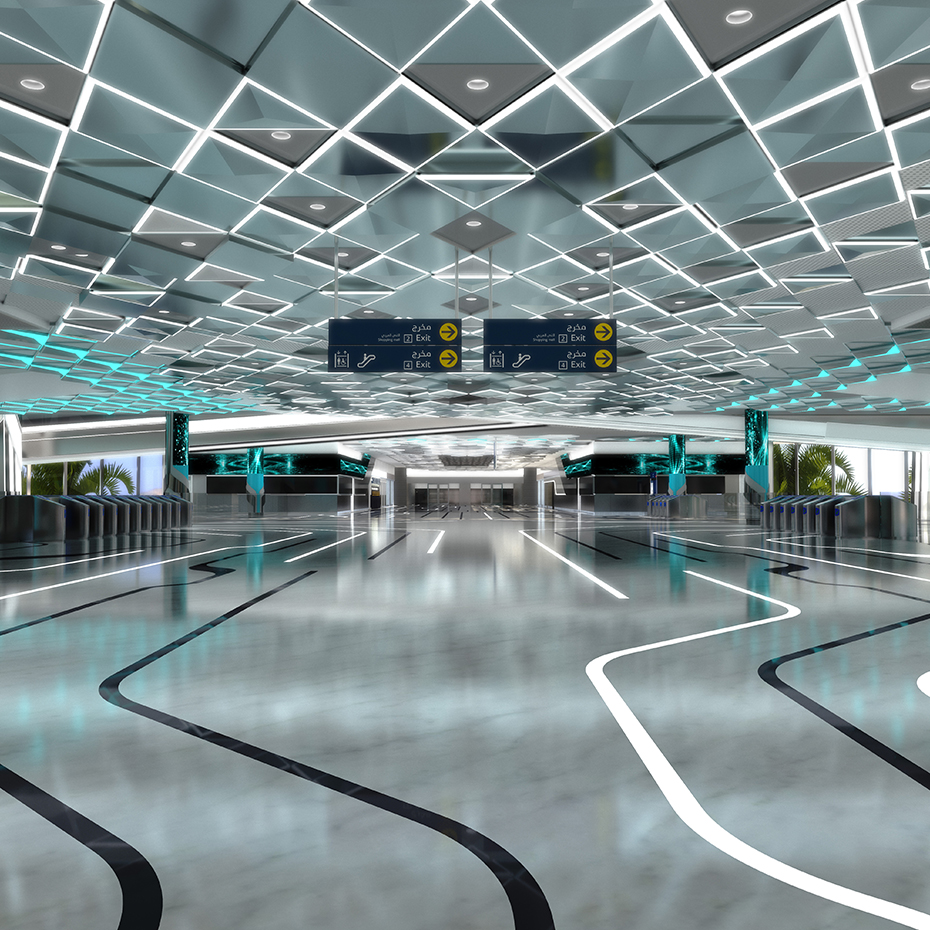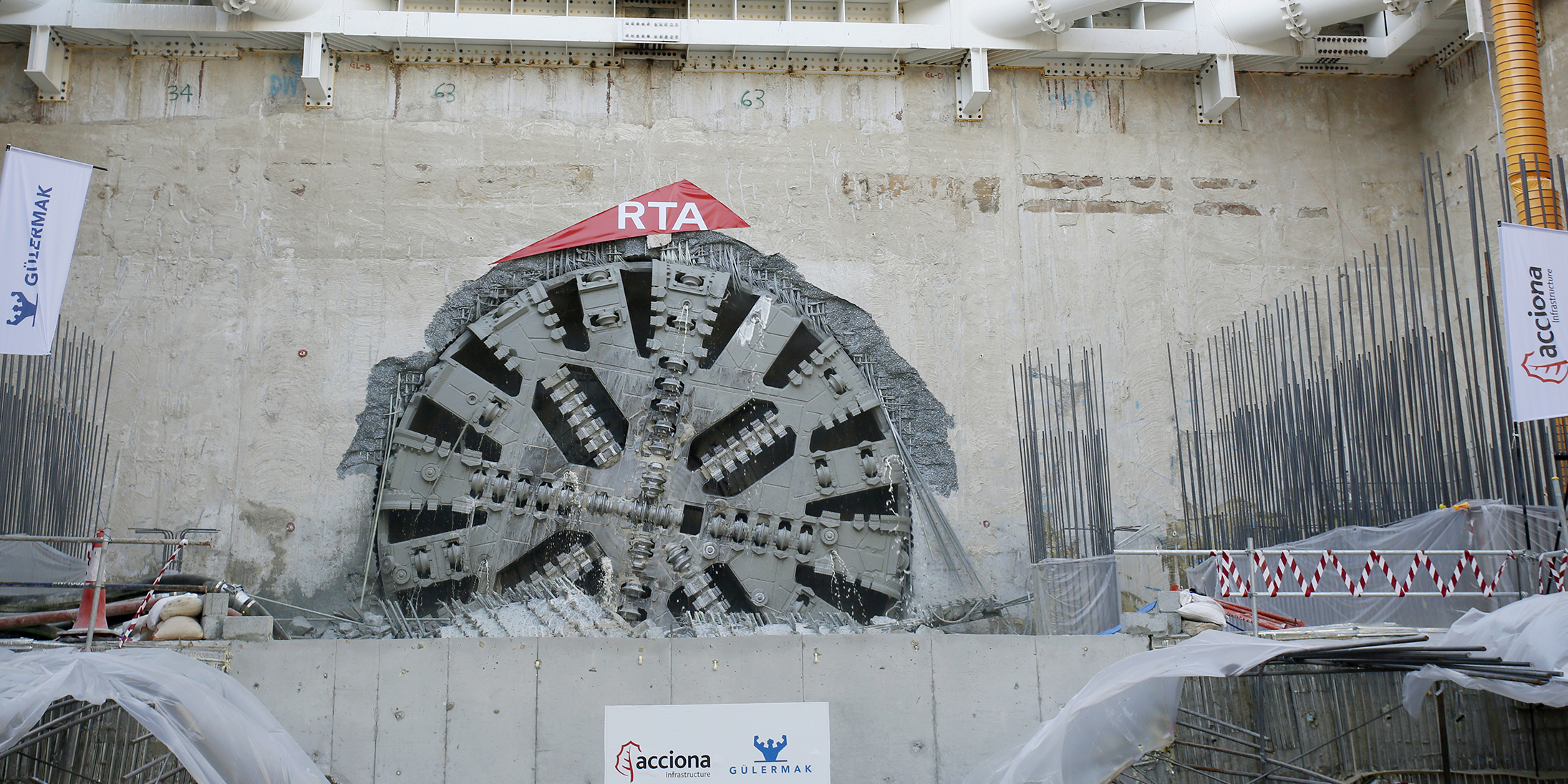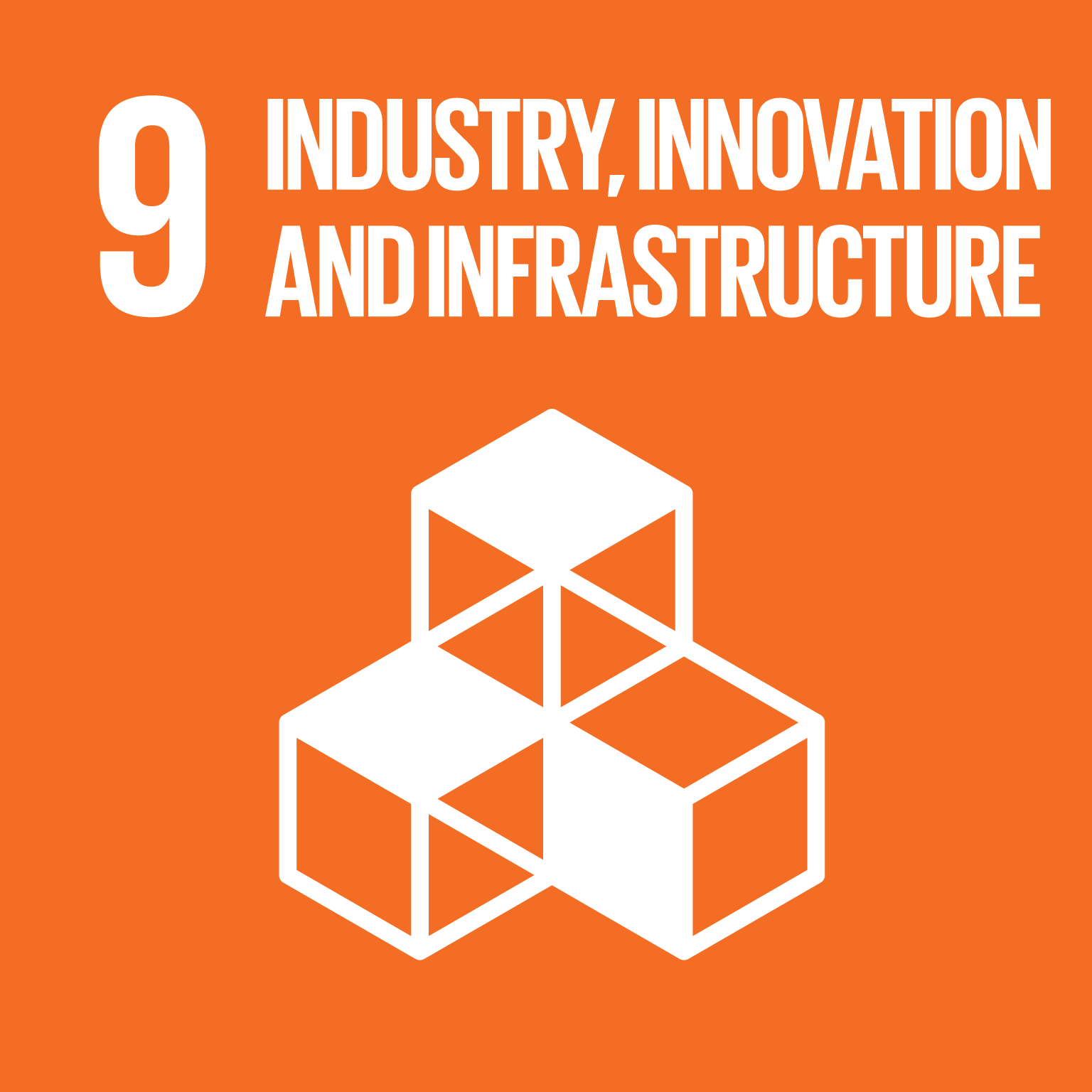15km
metro line
INDUSTRY, INNOVATION AND INFRASTRUCTURE
Build resilient infrastructure, promote sustainable industrialization and foster innovation
Economic growth, social advancement and action against the climate emergency depend largely on investment in infrastructure, sustainable industrial development and technological progress. Today, about 1 billion people live more than 2 km from a roadway, 940 million live without electricity, and 663 million lack improved drinking water sources.
ACCIONA participates in the entire infrastructure construction value chain, from the identification of opportunity, design and execution, to the operation and maintenance of the constructed works, using the most advanced and innovative techniques.
Performance quality and safety are two of the criteria that maximize the company's value proposal in the development of large infrastructure projects and that differentiate it from other competitors in the construction field.
Approximately 2 km of the underground sections were excavated using a tunnel boring machine, and a 1 km section that branches from the current Red Line in Nakheel Harbour and the tower station has been excavated using a false tunnel.
The route has seven stations (five elevated and two underground) with LEED Gold certification, including three interchange stations and two underground stations. The stations connect certain major destinations such as Discovery Gardens, Al Furjan, Jumeirah Golf Estates and The Dubai Investment Park.
The project includes the creation of an iconic station at the EXPO 2020 site and an interchange station on the Red Line at Nakheel Harbour. The main station of the Expo has been designed to represent the wings of an aircraft. The exquisite exterior structure of the Expo station, made up of sweeping curves, makes it stand out among the other stations being built along Route 2020.
ACCIONA is the majority partner in the project design and construction joint venture, and in the delivery of the ExpoLink project consortium, and shares responsibility for leading the project management group and completing the project design and construction. The contract also includes operation of the Metro. For this purpose, ACCIONA and Gülemark have partnered with Alstom to head the operation.
Alstom will provide and integrate the entire metro system that includes 50 metro trains, power supply, communication, automatic tariff control, roadworks, platform doors and a three-year guarantee throughout the system. In addition, it will improve the existing metro line by enhancing the power supply, communication systems and signalling on the track. The trains, capable of carrying up to 700 passengers each, will be 88 metres long and each vehicle will consist of five carriages.
In order to be environmentally friendly, the train is equipped with a complete electric braking system, LED lighting and other innovations to reduce energy consumption.
The project also includes a train shed and a stabilisation area, and integrates a new railway system for automated control of Thales driverless trains and other new and old metro systems (such as trains, power supplies, communication systems, automatic tariff control systems, trackworks and platform screen doors).
GENERAL INFORMATION
- Location: Dubai, Arab Emirates.
- Contract type: Design and construction .
- Infraestructure:
- 15 km long metro line.
- 3,5 km tunnel.
- 7 stations:
- An interchange station on the Red Line at Nakheel Harbour.
- Five elevated stations.
- Two underground stations.
- Train sheds.
- Iconic station at the Expo 2020 site.
- Year of project completion: 2020

Integrated design for civil works
The development of an integrated design for civil works led to some innovative solutions:
- Mounting of viaducts in urban area with a launch portico.
- BIM application from the early stages. The project is being fully developed under the BIM Level 2 methodology, as defined by British standard PAS1192-2: 2013.
- Dry concrete for the tunnel roof during construction.
- Prefabricated segment of fibre-reinforced concrete (voussoirs using fibres). The construction of the tunnel included the installation of 1,450 rings, consisting of 7 segments each.
TECHNOLOGY AND INNOVATION
Prefabricated segment joints
Another key engineering achievement was the design of prefabricated segment joints. This design was elaborated to fulfil the customer's intentions, due to tight project deadlines, to avoid post-excavation injections and also to reduce future tunnel maintenance.
Ultra-fast launch
For the excavation of the TBM tunnel, an innovative method was used during the launch of the tunnel boring process. This method, called an "ultra-fast launch", involves starting the excavation near the surface, thus saving time and money. For a successful execution, several treatments were performed on the soil prior to the launch.

Portico launch methodology
The viaduct has a total length of 11.8 km and has been implemented using the portico launch methodology, an innovative construction method in the urban environment. This reduced interference with other infrastructures in use. In addition, this procedure reduces the risk of deformation due to the differential settling of the centring resting on the ground. Over 800 stacks and 342 sections have been executed for the viaduct structure.
AutoCAD Civil 3D and Autodesk Revit software
During the design phase, several BIM models were generated using AutoCAD Civil 3D and Autodesk Revit software, for both the tunnel and viaduct. The information with which the works were developed was extracted directly from these models. In addition, these BIM models have allowed for better coordination between the different teams that participated in the project, allowing them to anticipate decision-making during construction.
4D planning model
In addition, using Synchro Pro software, a 4D planning model was created that enabled all phases of the project to be controlled and the monitoring of construction work. Through its BIM department, ACCIONA is currently working on an as-built model for the newly completed TBM tunnel, adding the design and information of the work site.
Want to know more about TBMs?
The machine that even Jules Verne was unable to imagine
The technological evolution of tunneling machines, which accelerated at the end of the 19th Century and finally took off in the first half of the 20th, contributed greatly to the expansion of land transport worldwide. The excavation of tunnels to break through mountain ranges or circumvent difficult passes facilitated the ferrying by rail and road of passengers and freight, with their subsequent social and economic benefits...
